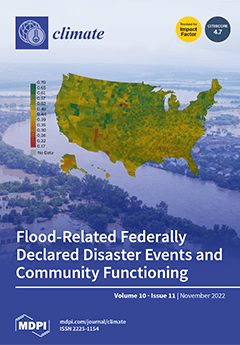Drought, the major limiting factor for plant growth and crop productivity, affecting several physiological and biochemical processes, is expected to increase in duration, intensity, and frequency as a consequence of climate change. Plants have developed several approaches to either avoid or tolerate water
[...] Read more.
Drought, the major limiting factor for plant growth and crop productivity, affecting several physiological and biochemical processes, is expected to increase in duration, intensity, and frequency as a consequence of climate change. Plants have developed several approaches to either avoid or tolerate water deficit. Plants as a response to drought stress (DS), close stomata, reducing carbon dioxide (CO
2) entry in the leaf, thus decreasing photosynthesis which results in reduced synthesis of essential organic molecules that sustain the life on earth. The reduced CO
2 fixation, decreases electron transport rate (ETR), while the absorbed light energy overdoes what can be used for photochemistry resulting in excess reactive oxygen species (ROS) and oxidative stress. Current imaging techniques allow non-destructive monitoring of changes in the physiological state of plants under DS. Thermographic visualization, near-infrared imaging, and chlorophyll
a fluorescence imaging are the most common verified imaging techniques for detecting stress-related changes in the display of light emission from plant leaves. Chlorophyll
a fluorescence analysis, by use of the pulse amplitude modulation (PAM) method, can principally calculate the amount of absorbed light energy that is directed for photochemistry in photosystem II (PSII) (Φ
PSII), dissipated as heat (Φ
NPQ), or dissipated by the non-radiative fluorescence processes (Φ
NO). The method of chlorophyll
a fluorescence imaging analysis by providing colour pictures of the whole leaf PSII photochemistry, can successfully identify the early drought stress warning signals. Its implementation allowed visualization of the leaf spatial photosynthetic heterogeneity and discrimination between mild drought stress (MiDS), moderate drought stress (MoDS), and severe drought stress (SDS). The fraction of open reaction centers of PSII (q
p) is suggested as the most sensitive and suitable indicator of an early drought stress warning and also for selecting drought tolerant cultivars.
Full article





